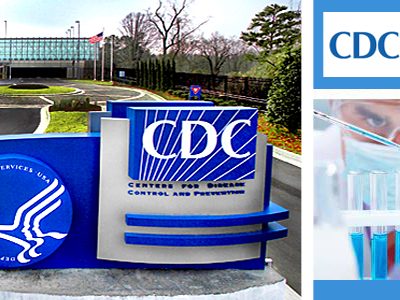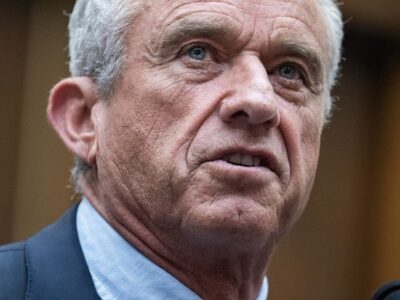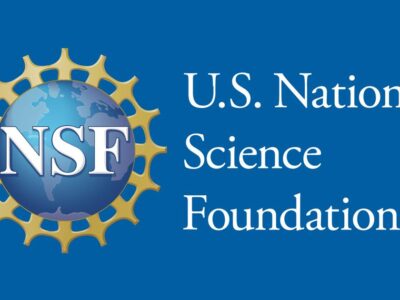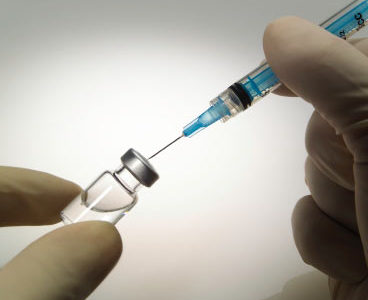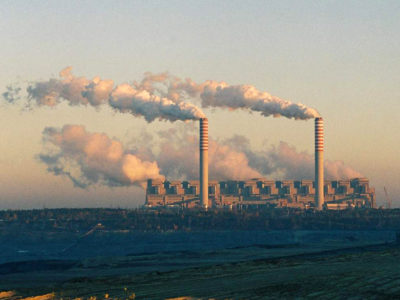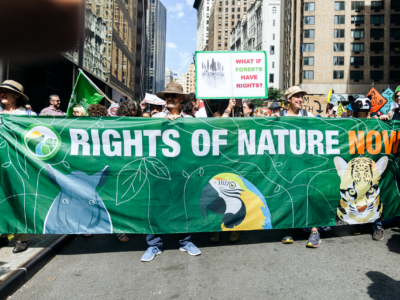Biotechnology
The War on Public Health Continues
Friday’s layoffs announcements at CDC targeted infectious disease control
During the COVID outbreak, President Trump said, “If we stopped testing right now, we’d have very few cases, if any.” That philosophy seems to have taken hold during his second term in office. On Friday, the Administration fired more than a thousand CDC workers, incljding the scientists and doctors who provide key information and expertise about infectious disease outbreaks. The effect is to kneecap the government’s capacity to detect and track outbreaks.
CONTINUE READINGA Clear and Present Danger to American Health
We’re all – each of us individually — less safe than we were a year ago.
RFK Jr. is purging the government of anyone who actually believes in science. What’s happening to public health under his leadership isn’t unique. All across the government, Trump is at war with science, cancelling billions of dollars of biomedical, energy, and climate research; closing EPA’s science department; replacing hard scientific evidence with climate denial as official dogma. This is a recipe for disaster, like closing your eyes will flying a plane.
CONTINUE READINGHow Trump’s War on Research Hurts the US Economy
The economic evidence confirms the huge benefits of government support for research.
One of the victims of the Trump Administration has been scientific research, notably including research on the environment, clean technologies, and even public wealth. The government’s own research capacity is under attack from agencies from EPA to NIH, grants to universities have been cancelled, and future funding from agencies like NIH and NSF is in peril. Yet the Administration has given little though about how this effects competitiveness in a high-tech world.
CONTINUE READINGWillful Ignorance as Government Policy
The Trump Administration is systematically shutting down sources of vital information.
There is a deep anti-intellectualism embedded in MAGA. As RFK Jr. advises people, why pay attention to scientists when you can just “do the research” in the far corners of the internet?
There’s also the fear that data and research may not fit its political agenda. For instance, better information about extreme weather could support more robust programs to deal with those threats rather than supporting massive budget cuts. More robust government programs aren’t part of the MAGA agenda. Even worse, information about extreme weather would also shed light on climate change, a taboo subject.
Lives in the Balance: Infectious Disease and the Trump Administration
The Administration has made serious inroads on safeguards against infectious disease.
Disease control, like many other traditional government activities, has been under a MAGA-driven onslaught. Indeed, we cannot rule out the risk that rather than helping, the government will try to block the use of lifesaving vaccines.
CONTINUE READINGThe Legal Complexities of Deregulating Power Plant Carbon Emissions
The Supreme Court struck down Obama’s powerplant regulation. but it didn’t endorse Trump’s first try either.
We are likely to end up with a Trump rule for powerplant emissions that is much weaker than the Biden rule, but not as weak as EPA’s effort in the first Trump Administration. And the process will take Trump longer this time, with a greater litigation risk.This matters because even a very weak rule may require significant investments in improving powerplant efficiency, which could result in some plant closures.
CONTINUE READINGWhy I Still ♥ IRA
Biden’s climate law has already had a dramatic impact.
With over a half-trillion dollars in clean tech investment to date, the Inflation Reduction Act has left an indelible mark on U.S. climate policy. It’s unlikely that Congress will vote to repeal the whole law, given massive investments in GOP congressional districts. But even if they did, there’s no undoing the investments already made.
CONTINUE READINGLitigating Against Trump
Trump’s agencies had a terrible litigation record the first time. It will probably get better – but not that much better.
In his first term, Trump’s litigation record was awful – winning only one case in four by some estimates.The Trump folks should do a better this time. But they may not improve that much, and could still lose more often than they win. Money invested in litigating against the Administration will be well spent. Meticulous attention to evidence and legal requirements is likely to remain a weak point.
CONTINUE READINGGood & Bad Environmental News From the U.S. Supreme Court
Escalating Legal Attacks on California’s Longstanding Clean Air Act “Waiver” Authority
This past week, the U.S. Supreme Court issued important orders in two closely-related environmental cases previously decided by the U.S. Court of Appeals for the District of Columbia. Last Friday the justices granted review in Diamond Alternative Energy v. Environmental Protection Agency, agreeing to decide whether fossil fuel manufacturers have legal standing to challenge an …
Continue reading “Good & Bad Environmental News From the U.S. Supreme Court”
CONTINUE READINGSix Things to Know about Rights of Nature
More than 500 Rights of Nature laws and policies have been passed globally. Here’s how to make sense of this nascent movement — or movements.
This Fall, I have been co-teaching a course on Rights of Nature with the historian Jill Lepore. This is the first time either of us have taught the subject and it has proven a wonderful opportunity to explore with our students this emerging movement — one that some have praised as “A Legal Revolution That …
Continue reading “Six Things to Know about Rights of Nature”
CONTINUE READING



